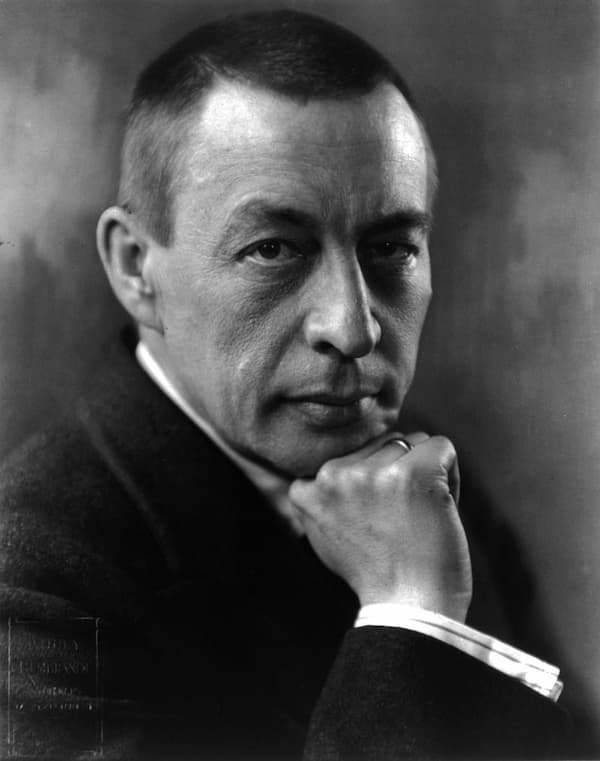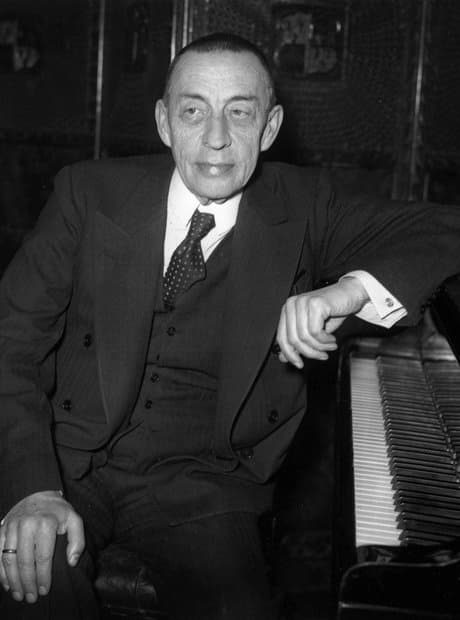Written in1940, late in his career, the Symphonic Dances by Sergei Rachmaninoff (1873–1943) started out to be a ballet with choreography by Leonid Fokin, but Fokin died in 1942, and the idea died with him.

Kubey-Rembrandt Studios: Sergei Rachmaninoff, 1921
Almost a symphony, albeit in three movements, the Symphonic Dances recall many parts of Rachmaninoff’s long and successful career. The first movement, with the unusual tempo indication of Non allegro, has elements of his highly successful Romeo and Juliet ballet. In an unusual sound choice, the alto saxophone takes a solo role. There’s also a careful reference to his disastrous First Symphony, which not only had its premiere in 1897 with a drunk Alexander Glazunov but also a scathing review by César Cui, who declared it ‘a student attempt to depict in music the seven plagues of Egypt’. This disaster held back Rachmaninoff from composition for years until a hypnotism treatment by Dr. Nikolay Dahl brought him back to his senses.
As a dance, the movement was supposed to depict mid-day, and it has all the scurrying feel of the actions of one’s duties. The three-note motif in the cor anglais becomes a central motif for the entire work. The ‘sad and reflective melody’ in the alto saxophone is Rachmaninoff at his most lyrical and very characteristic of the composer. The use of the saxophone may also be an unconscious reference to that most American of genres with the saxophone, jazz.
Sergei Rachmaninoff: Symphonic Dances, Op. 45 – I. Non allegro (Detroit Symphony Orchestra; Leonard Slatkin, cond.)
The second movement, Andante con moto (Tempo di valse), is Twilight. Based on a waltz tempo, it’s a dance of shadows, ghosts, and memories, starting with the muted trumpets.
Sergei Rachmaninoff: Symphonic Dances, Op. 45 – II. Andante con moto (Tempo di valse) (Detroit Symphony Orchestra; Leonard Slatkin, cond.)
The final movement, which changes tempo frequently (Lento assai – Allegro vivace – Lento assai – Come prima – Allegro vivace), is set at Midnight. There’s a constant struggle in music between Death (represented by the Catholic sequence from the mass for the dead, Dies irae), and a triumphant Life, represented by the Allelujah from the Russian liturgy. We get the 12 strokes of midnight, the Dies irae and, at the end, it is Life that triumphs.

Sergei Rachmaninoff, 1940s
Sergei Rachmaninoff: Symphonic Dances, Op. 45 – III. (Lento assai – Allegro vivace – Lento assai – Come prima – Allegro vivace (Detroit Symphony Orchestra; Leonard Slatkin, cond.)
This was Rachmaninoff’s last major orchestral work, and in it, he finds all the elements of his life, from his first symphony to his religious works (such as the All-Night Vigil, op. 37). The work was given its premiere by Eugene Ormandy and the Philadelphia Orchestra in January 1941, and the score was dedicated to Ormandy. His quotation of the First Symphony in the coda to the first movement is interesting because, after its very unsatisfactory premiere, the work was suppressed by Rachmaninoff, and it only emerged again in 1945, two years after his death. Use of the Dies irae was very common in Rachmaninoff, with one writer declaring him to be ‘virtually obsessed by it, so often…did he make use of it in works in various forms through his career.
As Rachmaninoff’s final statement about his career, the Symphonic Dances are a glorious summation.
For more of the best in classical music, sign up for our E-Newsletter
